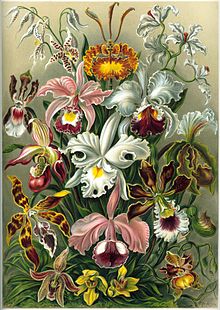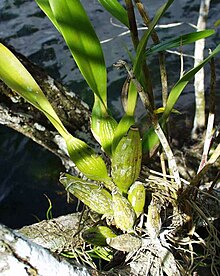The family also includes Vanilla (the genus of the vanilla plant), Orchis (type genus), and many commonly cultivated plants such as Phalaenopsis and Cattleya. Moreover, since the introduction of tropical species in the 19th century, horticulturists have produced more than 100,000 hybrids and cultivars.



Kingdom: Plantae
(unranked): Angiosperms
(unranked): Monocots
Order: Asparagales
Family: Orchidaceae
Subfamilies:
Apostasioideae Horaninov
Cypripedioideae Kosteletzky
Epidendroideae Kosteletzky
Orchidoideae Eaton
Vanilloideae Szlachetko
Etymology
The name comes from the Greek ὄρχις (órkhis), literally meaning "testicle", because of the shape of the root. Linnaeus categorized the family as Orchidaceae. Orchid was introduced in 1845 by John Lindley in School Botany, due to an incorrect attempt to extract the Latin stem (orchis) from Orchidaceae.
The Greek myth of Orchis explains the origin of the plants. Orchis, the son of a nymph and a satyr, came upon a festival of Dionysus (Bacchus) in the forest. He drank too much, and attempted to rape a priestess of Dionysus. For his insult, he was torn apart by the Bacchanalians. His father prayed for him to be restored, but the gods instead changed him into a flower.
These flowers were previously called Orchis, Satyrion (Satyrion feminina), or "ballockwort
Distribution
Orchidaceae are cosmopolitan, occurring in almost every habitat apart from glaciers. The world's richest concentration of orchid varieties is found in the tropics, mostly Asia, South America and Central America, but they are also found above the Arctic Circle, in southern Patagonia, and two species of Nematoceras on Macquarie Island at 54 degrees South.
The following list gives a rough overview of their distribution[citation needed]:
Oceania: 50 to 70 genera
North America: 20 to 26 genera
tropical America: 212 to 250 genera
tropical Asia: 260 to 300 genera
tropical Africa: 230 to 270 genera
Europe and temperate Asia: 40 to 60 genera

No comments:
Post a Comment